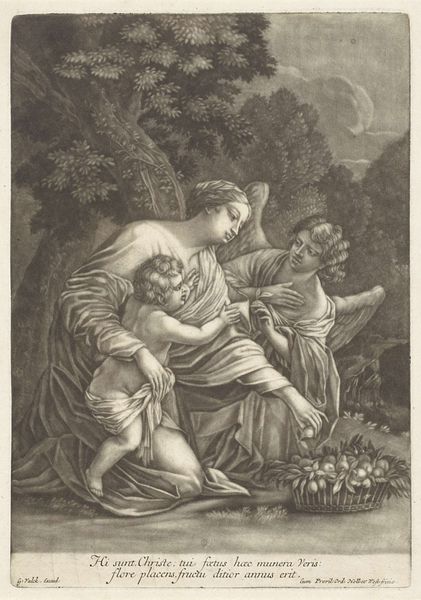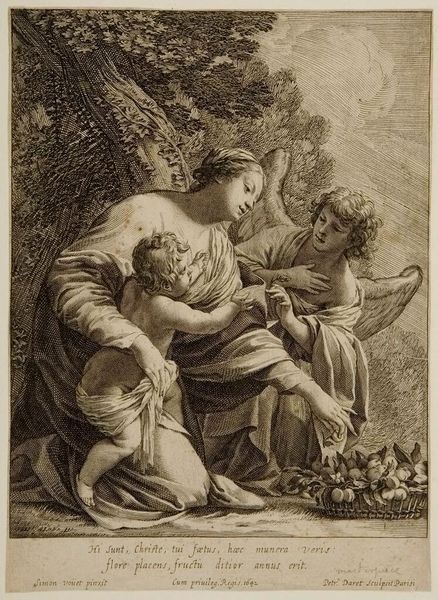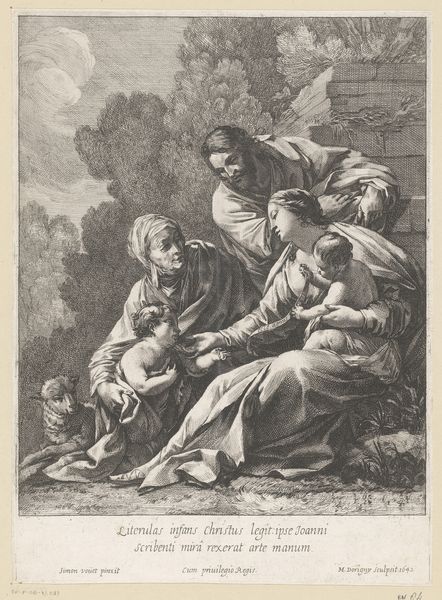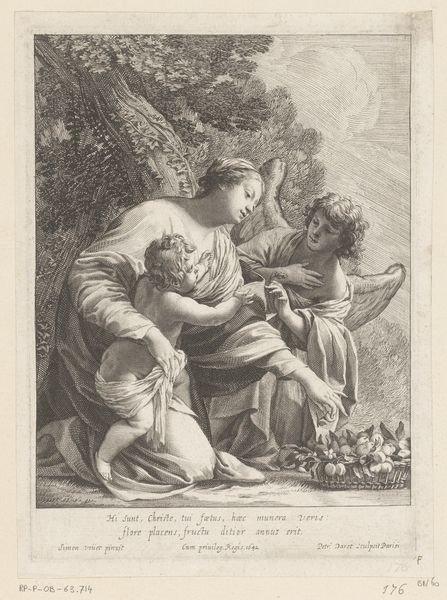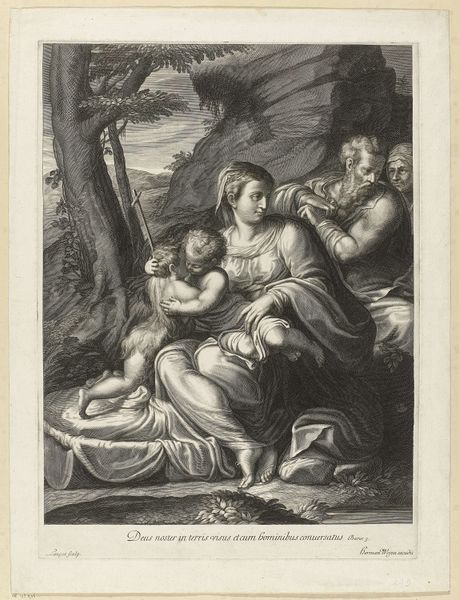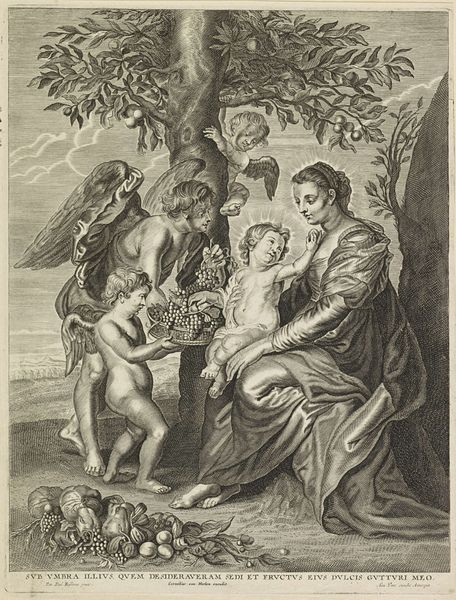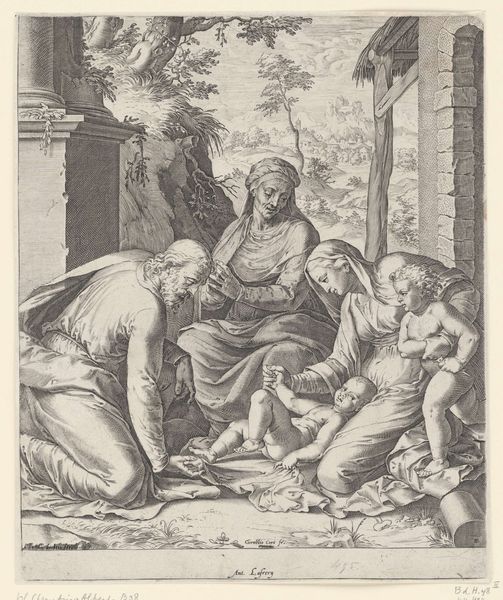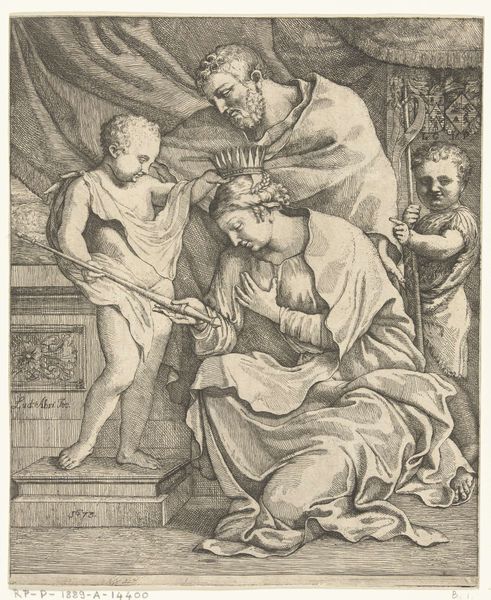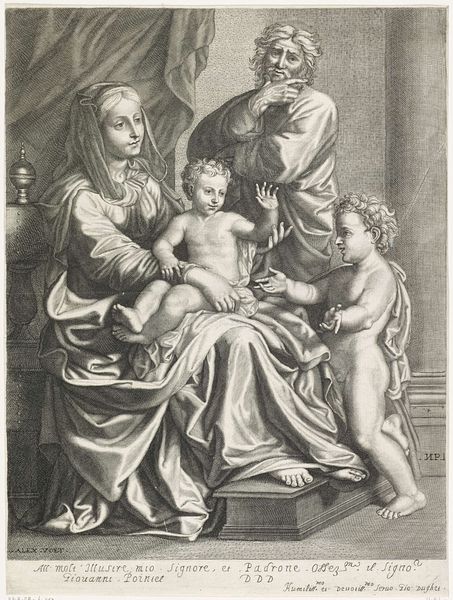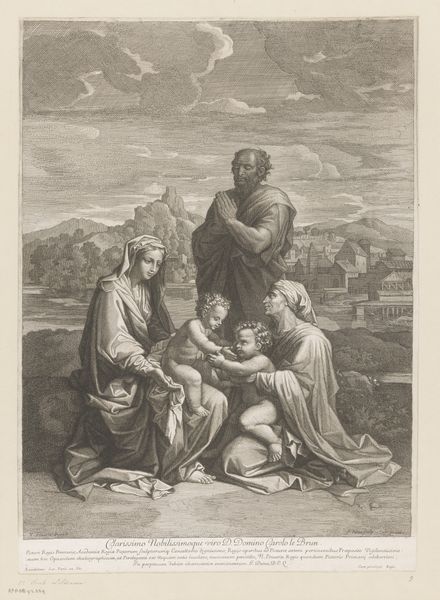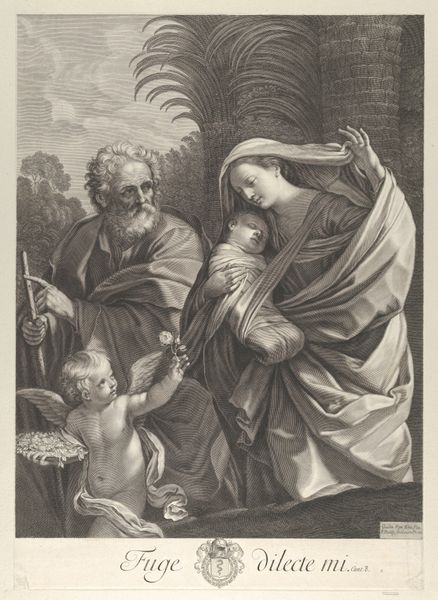
engraving
#
portrait
#
baroque
#
history-painting
#
engraving
Dimensions: height 386 mm, width 317 mm
Copyright: Rijks Museum: Open Domain
Editor: This is Pieter van Schuppen’s “Heilige Familie met Catharina,” an engraving from 1665, held at the Rijksmuseum. The figures have such a serene quality; their gazes draw me into the intimate circle of the Holy Family. How do you interpret the symbolic meaning behind the objects surrounding them? Curator: Indeed, the stillness contrasts sharply with the dynamism typically found in Baroque art. But let's look closer at those objects. The wheel, sword, and palm frond at the feet of Saint Catherine – do these objects trigger associations for you? They tell a story beyond the surface. Editor: Right, the wheel and sword definitely remind me of Saint Catherine's martyrdom. So, van Schuppen isn’t just depicting a scene; he's referencing a narrative, encoding it through symbols. Curator: Precisely. It is not just about representing an event, but evoking a cultural memory. And consider how Catherine offers a ring to the Christ child: marriage symbolism appears with a saint whose sacrifice embodies commitment. This reflects values deeply embedded in that period’s psyche. Can you see how visual and symbolic layers shape meaning? Editor: I do. The symbols, drawing on shared cultural knowledge, add incredible depth to a seemingly simple scene. The palm suggests triumph over death, as does Catherine's offering to Christ, symbolizing an immortal bond. Curator: Exactly! So this work invites us to reflect on themes that were very resonant at the time: familial duty, faith, and divine promises. Editor: Seeing how van Schuppen wove symbols together definitely unlocks a new dimension to understanding the cultural significance behind his composition. Thanks for illuminating it for me! Curator: It's in understanding these layers that we appreciate how art serves as a mirror and a preserver of our collective history and emotions.
Comments
No comments
Be the first to comment and join the conversation on the ultimate creative platform.
